Annual Report 2014
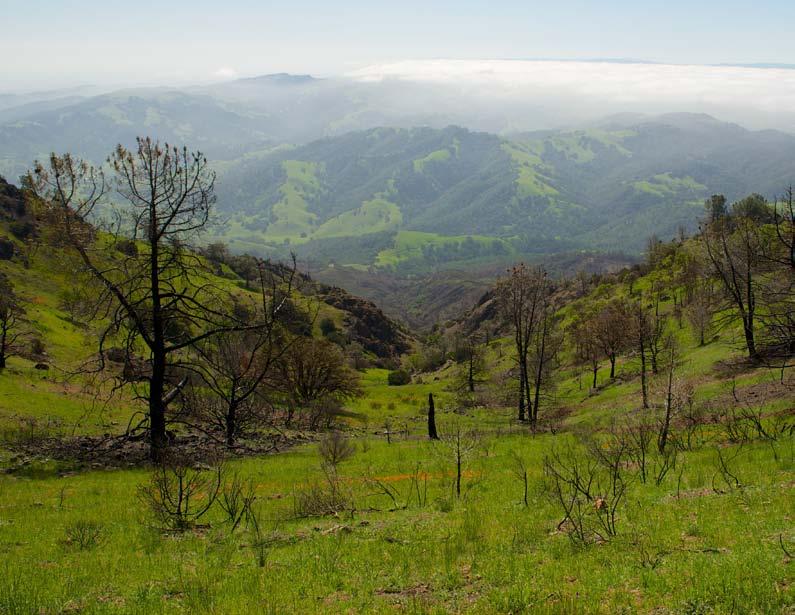
The post-Morgan Fire regeneration of Mount Diablo at BioBlitz 2014. by Kristen McCleery.
Dear Friend of the Mountain,
Board of Directors
Scott Hein, President
Burt Bassler
Treasurer
Amara Morrison, Secretary
Heath Bartosh
Joe Canciamilla
John Gallagher
Claudia Hein
Gary Johnson
Doug Knauer*
Sue Ohanian
Marty Reed
Malcolm Sproul
Art Bonwell and Mary Bowerman
Founders
*term ended in 2014
Why do we save the Diablo wilderness? From a tiny seed, a plant flowers and is recorded in Dr. Mary Bowerman’s botany journal sometime in the 1930s. This itty-bitty flower grows back year after year, giving food to insects and other animals. Thriving on the side of the mountain—a small but integral part of nature’s system. The work we do today—the vigilance, the investment, the sweat—we do in part to make sure that 100 years from now another budding botanist can still be delighted to find that tiny flower.
Our vision is to save the entire Diablo wilderness —its whole natural system—and we’re getting there one small piece at a time. At a size of 51 acres, our new Big Bend property may seem tiny compared to the 180,000 acres we strive to protect but it is huge in important resources and connections. Piece by piece, over time, we can save all of it, with the help of you and our partners.
These days, people are seemingly more connected to their electronic devices and less so to the natural world. The world outside provides different values, simpler perhaps but just as important. Many of our supporters have
it figured out. Volunteers selflessly spend hours walking property lines, clearing debris, fixing fences, cutting nonnative weeds and walking miles with water buckets to quench the thirst of newly planted oaks. Oaks in whose shade they may never rest but they know someone else will. Someone, many years from today, will be enjoying the shade, the view of the mountain and that tiny flower growing nearby, thanks to you.
I hope you enjoy the stories in this annual report which highlight what your support made possible in 2014. Together, we are creating a national park-sized wilderness right here in our backyard for you, for wildlife and for future generations to enjoy.

The mary bowerman science and research program
The flames of the 2013 Morgan Fire were put out long ago but what they sparked is still going strong. The first major fire on Mount Diablo in decades is providing the first real chance to study how the mountain regenerates itself. And science guides all areas of our work—preserving, defending, restoring and even enjoying the Diablo wilderness.
After the smoke cleared, the research opportunities began because in our dry climate, fire doesn’t mean the end for all wildlife. This is the chance that fire adapted species have been waiting for.
“Fire followers” are species that follow a fire, either travelling to or growing in the location of a recent fire. These unique species require an element of the fire—heat, smoke, ash or access to sunlight—in order to repopulate. Seldom seen wildflowers blossoming between the trunks of charred chaparral were some of the silver linings of the blaze. As the mountain recovers, we’re learning from the process. One of the mountain’s largest fires raged in 1931 just after our botanist co-founder Dr. Mary Bowerman started her research there. She literally wrote the book on Mount Diablo’s plants. After the Morgan Fire, we realized this was a chance

to learn more about Mount Diablo and continue in the spirit of Dr. Bowerman’s initial inspiration for saving the mountain.
Last year, we created the “Mary Bowerman Science and Research Program” to encourage scientific research through collaborative efforts with scientists, academics and citizens in the Diablo wilderness. We provided our first minigrants to seven local researchers to study the mountain’s regeneration over the next three years. Because the last major fire on Mount Diablo was in 1977, much of this process has never been studied before here.
Our annual BioBlitz—a 24-hour period where experts identify as many species as they can in a given area—was a great way to bring more specialists in on the action. This year’s location included a portion of the Morgan Fire burn area. As you can imagine in a burn area, the total number of species identified was much lower than we usually find. But those 480 species of plants and wildlife help us to better understand the wilderness we’re protecting. It’s an invaluable opportunity to look at how the results of this research can guide our work. The findings can help us to identify priority lands for protection through preservation and land use planning as well as how we can better manage and restore our lands.
Looking Through the Lens of s cience
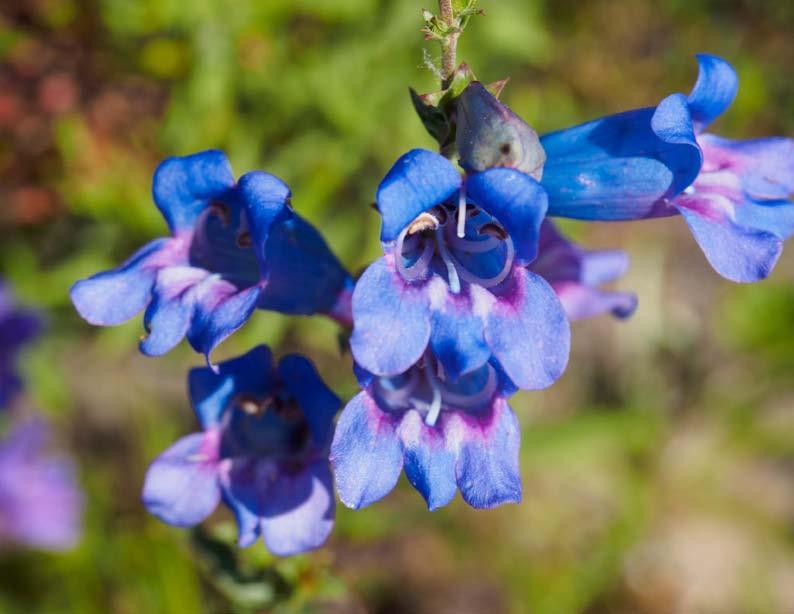
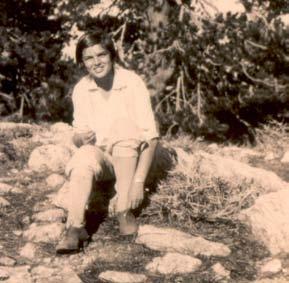 Ron Brown
Hiking through fields of wildlfowers on Four Days Diablo. by Scott Hein Foothill Penstemon in Shell Ridge Open Space. by Scott Hein
Ron Brown
Hiking through fields of wildlfowers on Four Days Diablo. by Scott Hein Foothill Penstemon in Shell Ridge Open Space. by Scott Hein
1 2
Executive Director
8,185 Volunteer Hours

2,237 Runners in Two Events
920 Hikers
50 Hikes
1393 Volunteers
Value of Volunteer $26/hr.* = $212,810.
*From www.volunteeringinamerica.gov
580 Guests at Moonlight on the Mountain
56 Photographers in Scholastic Photo Contest
451 Cyclists at Mount Diablo Challenge

600,000 Pounds Debris Removed
Planted Over 150 Plants
36 Active Projects

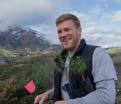
51 Planning Commissions Monitored Weekly
59,000 Acres Affected
An Overview

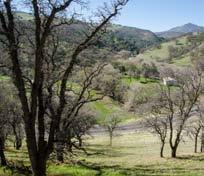
2,268 Acres Owned Currently Funded Seven Scientific Studies on the Mountain
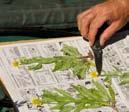
3 4
Trail Adventure is just one of the events that helps us connect the community with the Diablo wilderness. by Beryl Anderson
Volunteers coordinating “One Hour” shirts for Mount Diablo Challenge cyclists. by Scott Hein
Jim Cartan restoring one of the native plants to our volcanic dome. by George Phillips
Woodlouse in Doolan Canyon. by George Phillips
View of Big Bend in the Marsh Creek corridor. by Scott Hein
Monolopia gracilens at BioBlitz. by Kristen McCleery
View of Mount Diablo from the Diablo Trail on Four Days Diablo, by Scott Hein.
Enjoy
sciEncE 2014
VoluntEEr rEstorE DEFEnD PrEsErVE

B IG Ben D
Most animals need water at least once a day. The current drought has made our already dry climate that much tougher for critters that need to find safe and accessible water sources. Like an East Bay oasis, Big Bend’s 51 acres include a pond and an arcing 3,100 foot section of Marsh Creek for which the property is named. Not only does this water provide a critical drink for wildlife but to some it’s also a home. Threatened species like the California tiger salamander and the rare Western pond turtle rely on water for their habitat.
So, when Tilly, a rescued Western pond turtle, was ready to be released late this summer, experts contacted us to see if we had a protected pond where she could live. All of the places they had checked around the area were dry. Poor Tilly had been through a lot and needed a good place to stay. It just so happened that thanks to your support, we had preserved Big Bend just a few months before. Not only was its pond still half full of water but there were also other Western pond turtles living there when we introduced her to her new home.
Just like Tilly, Big Bend is getting a fresh start and the property itself is in transition.
The former location of a golf course and then overgrazed horse boarding ranch, it looked like there wasn’t a blade of grass on site nor many native plants remaining when we purchased it. As soon as we reduced the grazing pressure the grass and natives—and unfortunately weeds—all resurged.
Tilly is a rare species. Land that can support rare species, which have specialized needs, can also support many other types of more common wildlife as well. Beyond Big Bend’s creek and pond, diverse habitat rises from the floodplain up to blue oak wooded hills. The more kinds of habitat the land has, the more types of wildlife the land can support. Big Bend’s diverse habitats from creek side to blue oak wooded hills make it an excellent candidate for restoration.
Native plants provide food and shelter for wildlife so encouraging native plants and removing competing non-native ones are major steps in restoring natural lands. We started by clearing more than 80 cubic yards of debris from the creek’s floodplain and weeding out non-native invasive plants like purple star thistle and artichoke thistle to begin the restoration process. We plan to enhance the creek, its floodplains and the pond—priorities since both people and wildlife alike love to visit natural water.
That’s why we’ve been focusing on protecting and restoring lands all along Marsh Creek. Big Bend is one of ten properties that we are restoring along Marsh Creek right now. In addition to providing water and habitat, the creek is a natural pathway for wildlife as they need to move from one area to another for food or to find that special someone.
Big Bend’s preservation is a great example of why our work—and your support—is even more critical today. We were able to purchase Big Bend from an auction in a matter of weeks where others may need months to be able to take action.
Because of donors like you, we can move quickly to protect a property when the opportunity arises and care for the land...
...until the time is right for a public agency to bring it into their fold for long-term protection and management. In the meantime, Tilly and her fellow wildlife have a protected home and we have an opportunity to work with volunteers to restore native habitat. Look for hikes and restoration days on Big Bend beginning this spring. Thank you for starting a new chapter for both Tilly and Big Bend.
PRESERVE
5 6
After a history of commercial use, Big Bend, named for its arcing 3,100 foot section of Marsh Creek, is returning to a more natural state and wildlife like Tilly the rescued western pond turtle, are able to make it their safe haven. by Scott Hein
It can happen relatively quickly. This one sure seemed to. On the south side of Mount Diablo, the gap between Dublin and Livermore had narrowed down to a single open space—Doolan Canyon. Now, that too was at risk.
Dublin is one of the fastest growing cities in all of California. Although there are thousands of housing units already within its city limits, a developer proposed to annex lovely Doolan Canyon and build at least 2,000 more houses.
In addition to beautiful scenery, the Canyon supports ranching, recreation and wildlife. It is home to golden eagles, American badgers, Callippe Silverspot butterflies and other rare wildlife. There is a natural lake in the canyon that also brings in other wildlife including shore birds like American avocets and Black-necked stilts. It’s no surprise that the East Bay Regional Park District has planned a regional preserve for the area.
With so much at stake, we helped form a coalition of Dublin residents to protect Doolan Canyon and other open space around Dublin. We started a grassroots signature drive for an initiative to create an East-side Urban Limit Line, beyond which development cannot occur without a vote of the people. The
DEFEND
developer countered with their own paid signature drive and qualified a “green-washed” look alike version for the November Dublin ballot. Their plan was designed to confuse voters. But in reality, the developer’s Measure T would undo the Urban Limit Line and allow Doolan Canyon to be developed.
We helped lead the “No on Measure T” campaign that defended the canyon. 84% of the voters opposed Measure T in November and it failed while Dublin’s newly adopted Urban Limit Line survived. It can only be changed by the voters. Doolan Canyon development was stopped and is now far less likely.
Although houses can seem to pop up overnight, defending land can take years.
We protect more land through land use planning than by purchasing it for preservation.
Each year, we monitor more than 50 planning agendas on a weekly basis, and respond to dozens of development proposals. Without vigilance, the projects would threaten thousands of acres on and around Mount Diablo—the national park-sized wilderness we are working to protect in your backyard for you, for wildlife and for future generations to enjoy.

Protected Lands
Active Land Use Projects from 2014 map of the diabLo
wiLderness
concord naval Weapons station reuse Plans
Faria Project Montreux Development
james Donlon Blvd. Extension Mount Diablo Mercury Mine
Brentwood General Plan update
tassajara Parks
Doolan canyon Windmill repowering
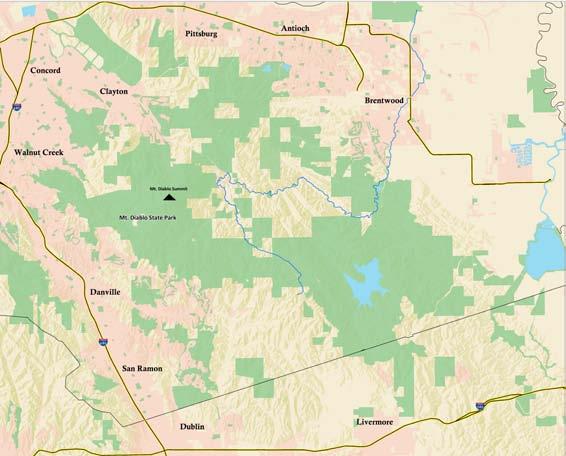
7 8
D OOLAN C AN y ON
Doolan Canyon has a natural lake making it a home for this Black-necked stilt along with many rare species. by George Phillips
THE VOLCANIC DOME
The first step in restoring one of Mount Diablo’s volcanic domes, our Marsh Creek 6 property, is complete thanks to supporters like you. Restoration is crucial when preserving rare and endemic species of furry friends and plants alike. Marsh Creek 6, our second volcanic dome, was purchased for its segment of Marsh Creek and is our second volcanic dome and one of 19 domes near Mount Diablo.
It was an obvious choice for us to restore the dome because of the two dilapidated structures on the property, which were practically falling down the cliff side. Also the dome’s unusual geology, with its rich volcanic soil and varying sun exposures make sit unique habitat. The threatened Alameda whip snake and endemic Contra Costa County manzanita have been found there.
Phase 1 of the project required demolishing the house which was an exciting and new adventure for us considering we had never removed a structure of this magnitude before.
RESTORE
The unstable structures and insanely steep cliff sides led to extreme challenges for removing the debris. Our biggest priority was that we do it safely.
This required much planning and expert help. Approximately 50 hours and 600,000 pounds of debris later, the structure was removed. As the pieces were cleared away and we saw more and more of the underlying natural volcanic rock, we knew we were on the right track.
While we were ecstatic to see the land in its more natural form, we needed to move quickly to establish erosion control before storms hit. After stabilizing the land, our amazing team of volunteers and stewards set out to sew seedlings of native bunchgrass for 2015.
With your help in restoring Marsh Creek 6’s native habitat, we have been able to accelerate the recovery of the volcanic dome so that future generations will be able to enjoy its’ amazing views and unique geology.
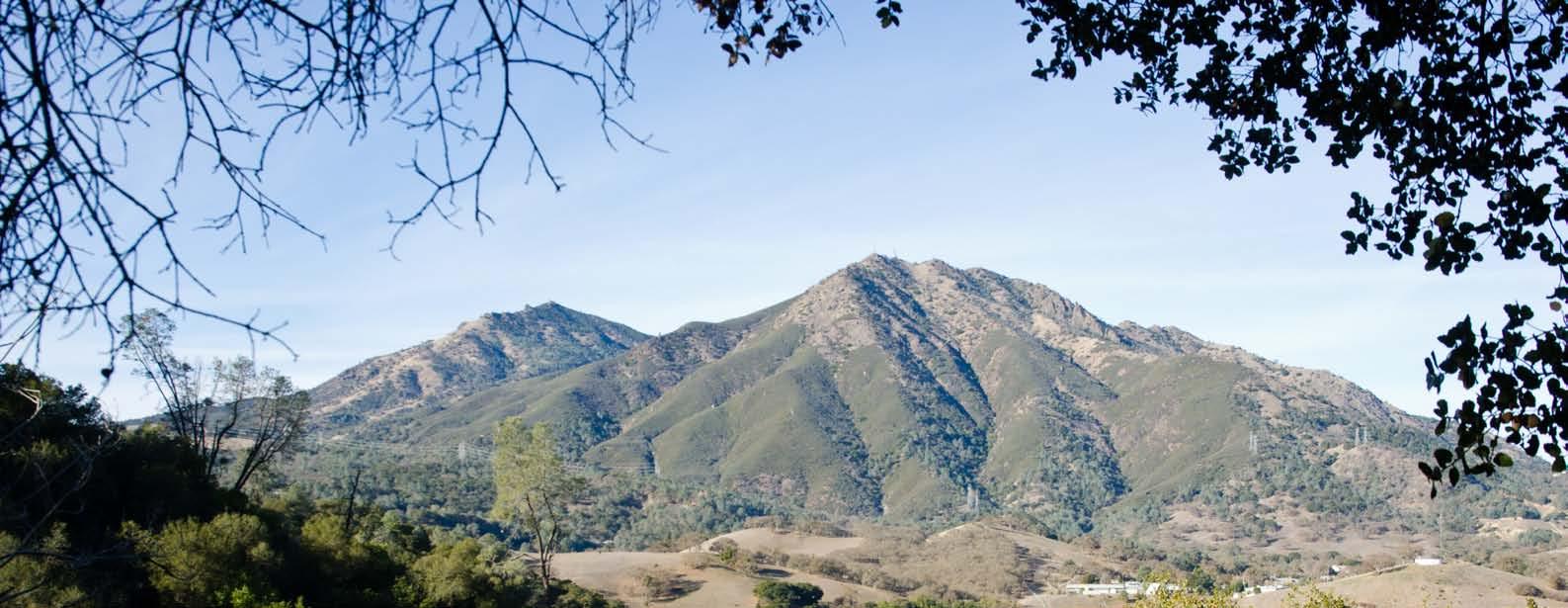
600,000 pounds of debris were removed from the peak of the volcanic dome. 82% of the material was recycled.
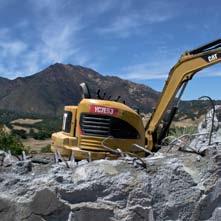

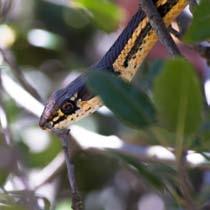
9 10
View of Mount Diablo from the volcanic dome on Marsh Creek 6. All photos taken by George Phillips on the property.
Vandalized pool at the structure prior to demolition.
Threatened Alameda whipsnake.
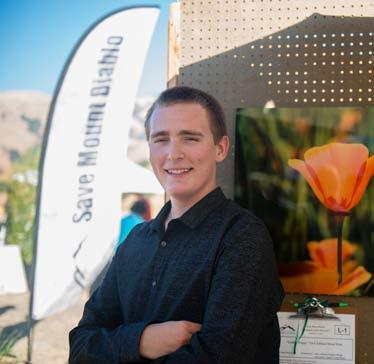
ENJOY
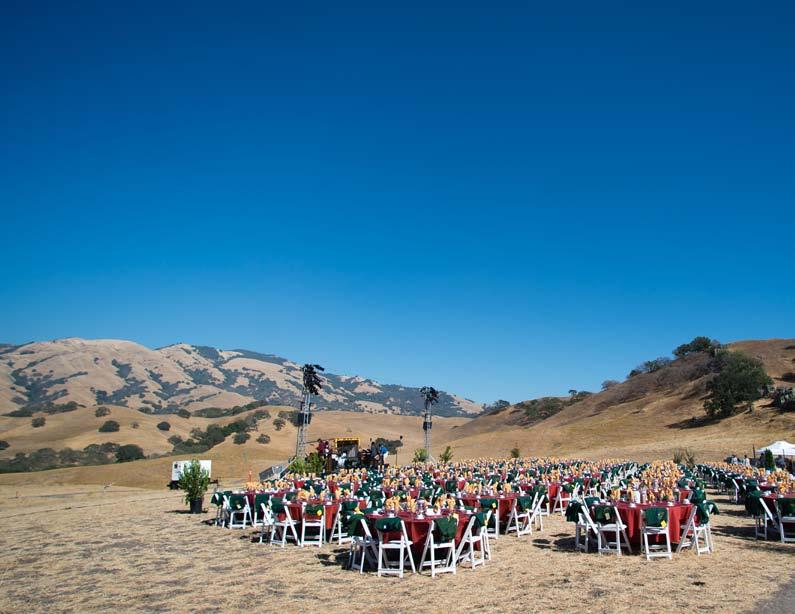
THE NEXT GENERATION
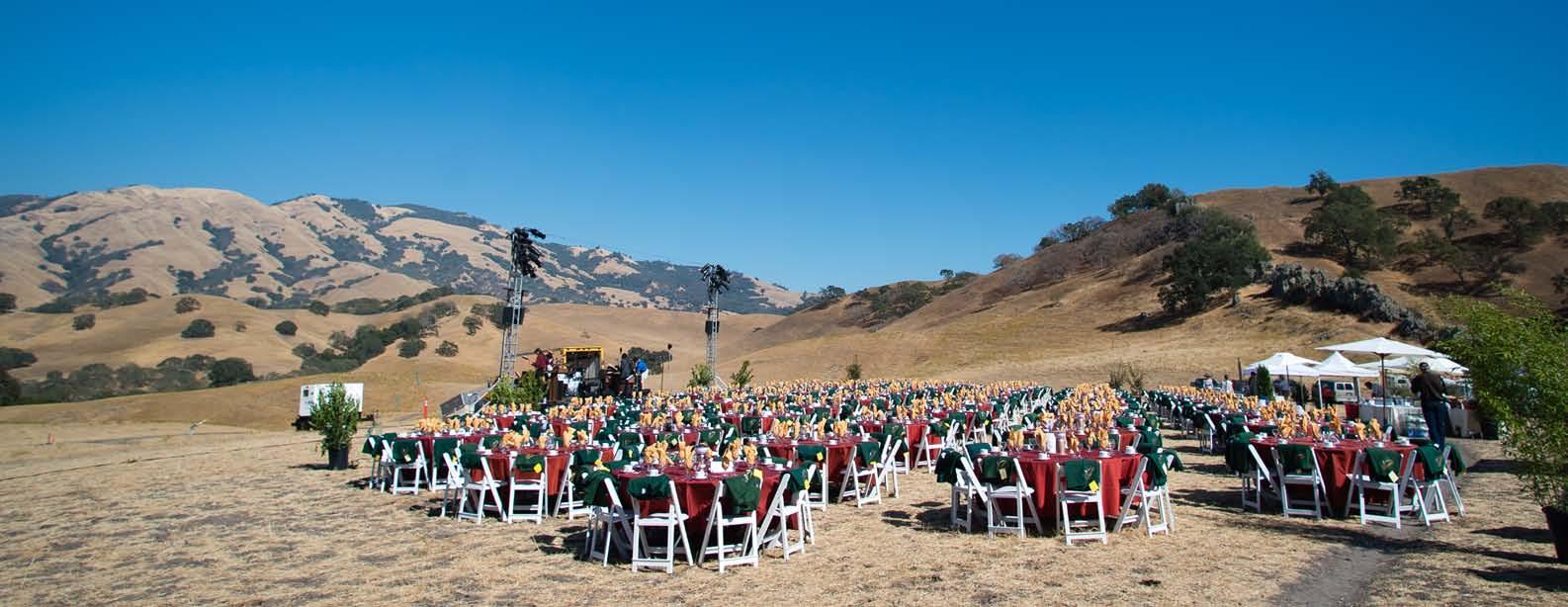
If someone has never been to the Diablo wilderness, protecting it probably isn’t a priority for them. In order to ensure future generations have the opportunities that we have in the Diablo wilderness, we invite folks outside. We offer a variety of activities including two trail runs, a backpacking trip, a camping trip, a bicycle ride and hikes galore so people can connect with Mount Diablo in a way that’s meaningful for them.
For 8th grader Allen Abbott, saving Mount Diablo started with our Scholastic Photo Contest. We were blown away when we saw the photos that he submitted last spring. The contest is open to all students – kindergarten through 12th grade – in Contra Costa and Alameda Counties with age categories to help
level the playing field. But last year, Allen’s photo “Golden Poppy” was the overall Grand Prize winner. After the awards were handed out, he was excited but humble and most of all, eager to get more involved with saving Mount Diablo.
We asked him to be the guest speaker at our annual Moonlight on the Mountain dinner celebration. With a print of his winning image in the live auction, Allen was confident and poised to take the stage. The animated crowd of nearly 600 stilled and all eyes were on Allen in rapt attention. He spoke of his nearly lifelong connection to Mount Diablo through scouting and photography and why your continued support is of vital importance. “It’s up to my generation to be the caretakers of natural gems like Mount Diablo, in the future… It’s up to you, and people like you, to ensure
the longevity of this wilderness, by providing strong financial support to Save Mount Diablo, so that together, we can preserve such a beautiful landscape.” The outpouring of support that followed that evening was the most generous yet, no doubt inspired by Allen’s heartfelt enthusiasm.
Continuing his passion for connecting people with the magic of Mount Diablo, Allen has decided to do his Eagle Scout Project with us to benefit the community, “so I can help create something that can touch the lives of many.”
Providing an array of opportunities for people to enjoy the beauty of the Diablo wilderness allows us to connect young people like Allen with the importance of saving Mount Diablo so the next generation will continue our work and appreciate its benefits.
11 12
Photos taken at Moonlight on the Mountain. by Stephanie Secrest
CONSERVATION PARTNERS
We’ve been saving Mount Diablo for 44 years but land preservation wouldn’t be as successful-from less than 7,000 to more than 110,000 acres- without all of the organizations and agencies that work together. We thank them and you for being a part of the land conservation movement that is protecting the Diablo wilderness for all of us to enjoy.
Partners:
Bay Area Open Space Council
Brentwood Agricultural Land Trust
California Council of Land Trusts
California State Parks
Coastal Conservancy
Contra Costa Water District
East Bay Leadership Council
East Bay Regional Parks
East Contra Costa County Habitat Conservancy
Greenbelt Alliance
Land Trust Alliance
Muir Heritage Land Trust
Tri-Valley Conservancy
And many, many others!
FINANCIALS 2014
These pie charts include financial information for Save Mount Diablo’s annual operating results (revenue and expenses) as well as land transactions. Save Mount Diablo’s total revenue for 2014 was just over $3 million (including restricted and unrestricted funding). The majority of funding comes from individuals—donors like you! Businesses are the next major contributors— both direct financial support and in-kind support through product donations or providing free professional services. Expenditures for 2014 totaled
approx $2.4 million. Program expenses include stewardship projects, community education and outreach, and advocacy for land conservation. It also includes expenses related to acquisitions other than the actual purchase price. In 2014 we put a down payment on a property which we expect to finalize the purchase and payment of in 2015. From year-to-year the cost of land purchase reflected in these numbers varies dramatically. For example, in 2013, the total expense was $10.6 M of which $8.4M was land. Management costs that year showed a lower percentage but the actual cost is almost the same as this year. (Numbers are based on un-audited 2014 financials.)
TEAM
Total Expenditures for 2014 (Approx. $2.4 million)
Total
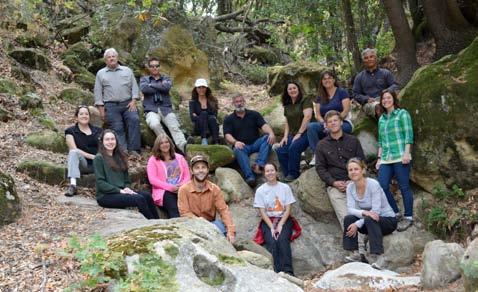
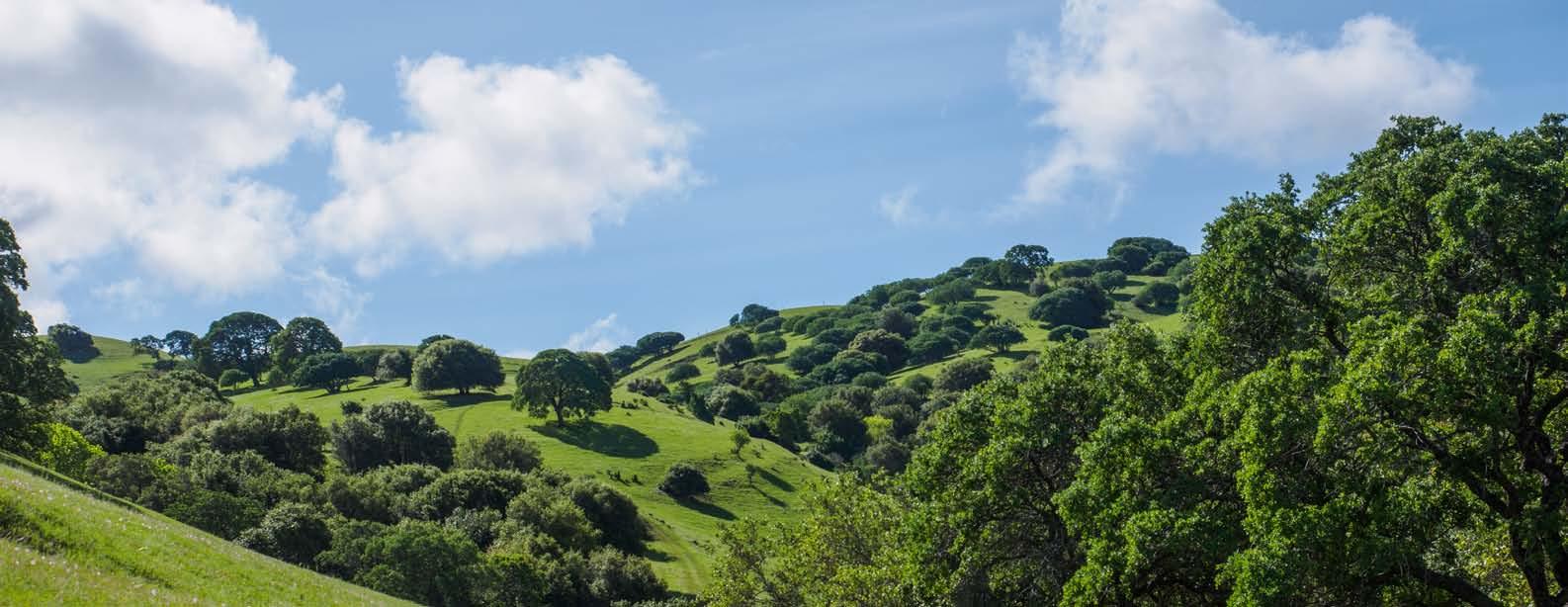
13 14
From left to right: Back Row: Ron Brown, Executive Director; Juan Pablo Galvan, Land Use Planner; Hidemi Crosse, Bookkeeper; Seth Adams, Land Conservation Director; Nora Sanchez, Accounting Associate; Dana Halpin, Administrative Assistant; Jeffrey Jensen, Land Use Planning Volunteer; Front Row: Meredith Hendricks, Sr. Land Programs Manager; Kate Cooper, Advancement and Land Intern; Mary Lind, Event & Volunteer Coordinator; George Phillips, Land Conservation Manager; Nicole Murphy, Sr. Administrative Assistant; Jim Cartan, Stewardship Associate; Julie Seelen, Advancement Director; Beryl Anderson, Communications Manager. Not pictured: Monica Oei, Finance Director; Kristen Noe, Administrative Assistant; Marciana Flores, Event & Volunteer Coordinator; Michele Johnson, Communications Assistant.
Programs (69%) Administration & Management (19%) Fundraising (10%) Land (2%) Contributions from Individuals (74%) Foundations (6%) Interest, Fees & Other (3%) Corporate Support (17%)
Revenue Received in 2014 (Approx. $3 million)
Photo of Big Bend. by Scott Hein
1901 Olympic Blvd.
Suite 320
Walnut Creek, CA 94596
saveMountDiablo.org

“ A society grows great when old men plant trees whose shade they know they shall never sit in.”
—Greek Proverb
Photo of Irish Canyon. by George Phillips




 Ron Brown
Hiking through fields of wildlfowers on Four Days Diablo. by Scott Hein Foothill Penstemon in Shell Ridge Open Space. by Scott Hein
Ron Brown
Hiking through fields of wildlfowers on Four Days Diablo. by Scott Hein Foothill Penstemon in Shell Ridge Open Space. by Scott Hein



















